
 Copyright © Michael Richmond.
This work is licensed under a Creative Commons License.
Copyright © Michael Richmond.
This work is licensed under a Creative Commons License.
Do you remember what Kinetic Energy is, and how to calculate it?

What if the body in question is not TRANSLATING (moving in a straight line), but REVOLVING around some point? If you are given the linear velocity of the body, it's no different.
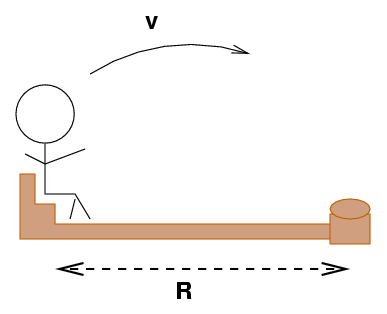
But what if you are given only the angular velocity?
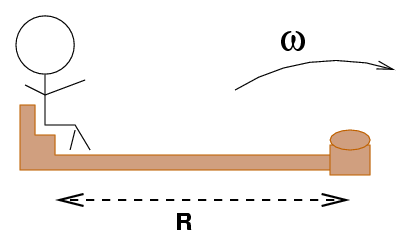
We can write the KE in terms of the angular velocity plus some other stuff ...
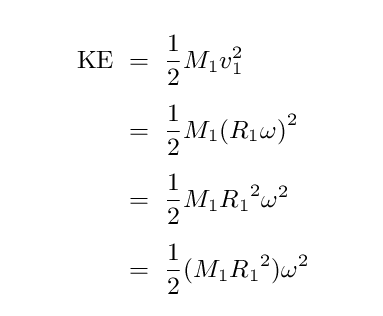
... but why should we bother?
The answer is -- if the rotating object is a complicated collection of pieces, then figuring out the linear velocity of each piece becomes tiresome.
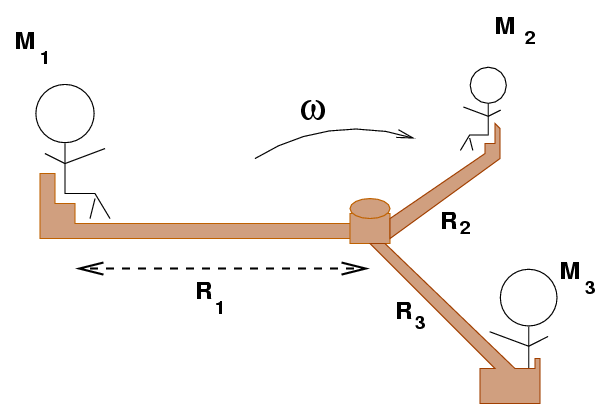
We can simplify the result down to a single, familiar-looking equation with just two variables

if we define a new quantity, the moment of inertia. For a compact mass, it is simply a combination of mass and distance-from-axis-of-rotation:
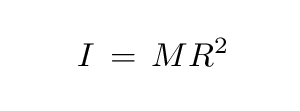
What IS this "moment of inertia"? You may recall that "inertia" is a fancy term which refers to the resistance of a body to a change in its motion. Items with large inertia -- like trucks and whales -- are hard to start moving, and hard to STOP moving once they get going. Items with small inertia -- like ping-pong balls and mice -- are easy to accelerate.
In a similar fashion, the "moment of inertia" measures the resistance of a body to a change in its rotation. A body with a large moment of inertia is hard to get spinning ... but, once it is spinning, is hard to stop. A body with a small moment of inertia is easy to start spinning, and easy to stop.
 Copyright © Michael Richmond.
This work is licensed under a Creative Commons License.
Copyright © Michael Richmond.
This work is licensed under a Creative Commons License.